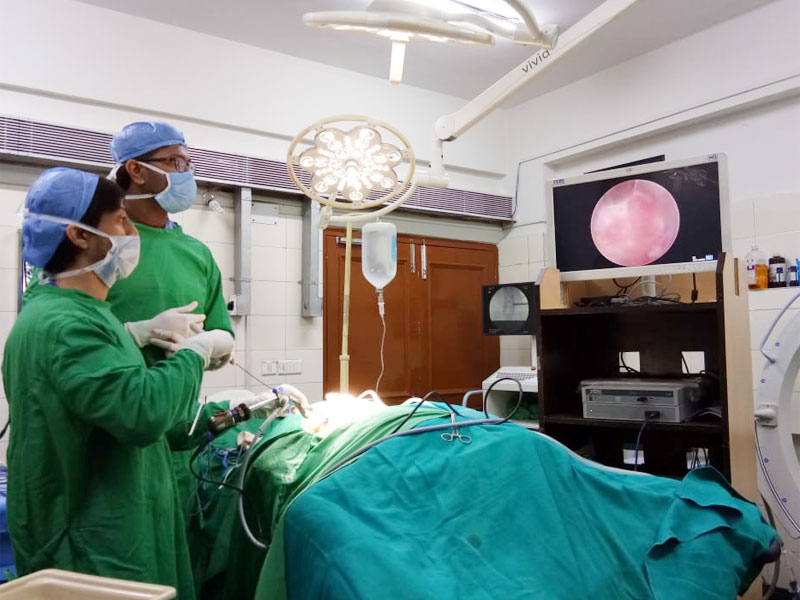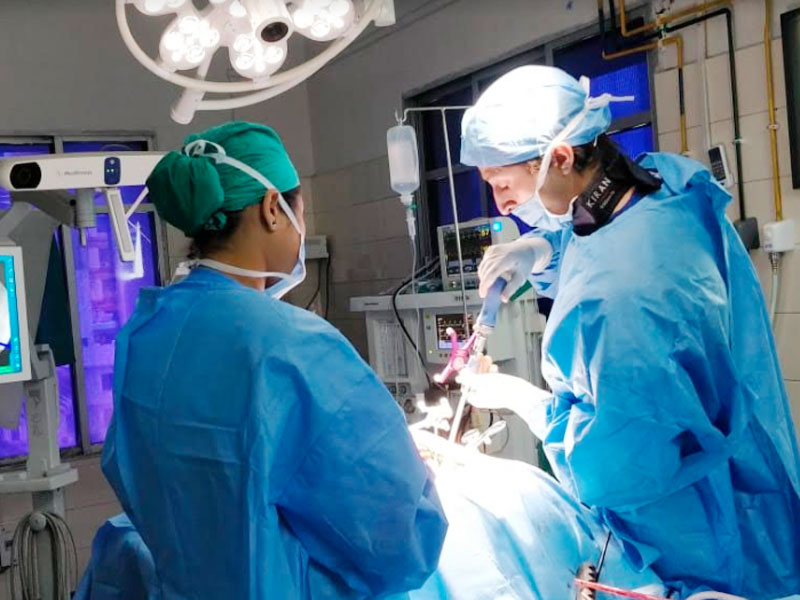shumayou@hotmail.com
09674342789
Minimally Invasive spine surgery is a revolutionary surgical technique in which spinal surgeries are performed using a ‘key-hole’. The procedures that can be performed with this cutting-edge technology are discectomies (for slipped disc), decompression (for lumbar canal stenosis) and spinal fusion (for spinal instability). Minimally invasive spine surgery differs from traditional spine surgery vastly. The focus is not just to get the job done, but instead the focus shifts on how to do it in the most patient friendly manner possible. All objectives of the surgery are achieved with minimal collateral damage to the soft tissues (muscles and ligaments) and bones.
There are 2 types of Minimally Invasive Spine Surgery.
Micro Endoscopic Spine Surgery under General Anaesthesia. Micro-Endoscopic spine surgery uses access ports of a diameter of 16mm, 18mm or 22mm. These ports are placed under fluoroscopic guidance targeting the point of interest. Through these access ports, the surgery is performed either using an endoscope or an operating microscope. The spinal muscles which are extremely important for activities of daily living are not injured when the surgery is performed this way. A whole range of surgeries from decompression to fusion can be performed this way. The surgery leaves a miniscule scar (1.5 – 2cm long) and gives the appearance of a small scratch.
Clinical studies have proven the benefits of minimally invasive spine surgery over open spine surgery.
Some of these proven benefits are:
Patients requiring spine surgery are usually the elderly, with multiple co-morbidities (diabetes, hypertension, heart and lung issues) and this swift and painless procedure makes a big difference in earlier recovery. Dr Dutta’s scientific research work published in Asian Spine Journal reports that only 1 in 1000 patients operated using this micro endoscopic spine surgery technique may suffer from an infection as compared to 1 in 25 patients with open spine surgery. Obesity in spine patients is also common. Open spine surgery in this subgroup of patients results in big incisions with prolonged recovery time. Key-hole surgery is a perfect solution to this problem. Patients usually walk few hours after surgery and can go home the next day.
Apart from Micro Endoscopic Decompressions/Discectomies, this technique can be used for Minimally invasive fusions (MIS-TLIF) also. Carefully selected patients of traumatic injury to the spine are also candidates for MIS-Fixation where-in the entire instrumentation can be done through stab incisions in the skin.
Video demonstrates Micro-endoscopic Spine Surgery
Endoscopic Spine Surgery under Local Anesthesia
Transforaminal Endoscopic Spine surgery is another minimally invasive spine surgery technique that utilizes an Integrated working channel endoscope to treat various problems in the spine including Disc herniation (Slip Disc), Spinal Stenosis & other degenerative conditions of the spine that contribute to Back Pain & Leg Pain. The Endoscope allows to visualize & operate on the spine using a keyhole incision (Less than 8 mm).
This Surgery is performed with a patient awake and aware in an operating room set up as a day care / overnight procedure. Surgery time is approximately 30-45 minutes per disc. A small 1/4th inch incision is made on the back to the side of the spine. The entry point is precisely calculated by fluoroscopic intraoperative measurements. Sedation and local anesthesia are provided. The anesthetic will allow the patient to be comfortable during the procedure but will leave enough feeling in the nerves so the patient can actually tell when the nerve is being stimulated or when pressure is taken away from the nerve.
The evolution of technology, visualisation and instrumentation in the last 10 years has redefined the way spine surgery can be performed. Most of our patients who undergo Minimally invasive spine surgery are comfortably walking the night of the surgery and discharged subsequently. We achieve this consistently by taking advantage of every advancement available to provide you the very best surgery. This often means that Dr Dutta will take advantage of Intra-operative Neuromonitoring, Navigation and robotics assistance as the case may demand. The whole team works synchronously to improve the safety of the spine surgery.

Endoscopic Spine Surgery In Awake Patient under Local Anesthesia

Navigation Assisted Spine Surgery